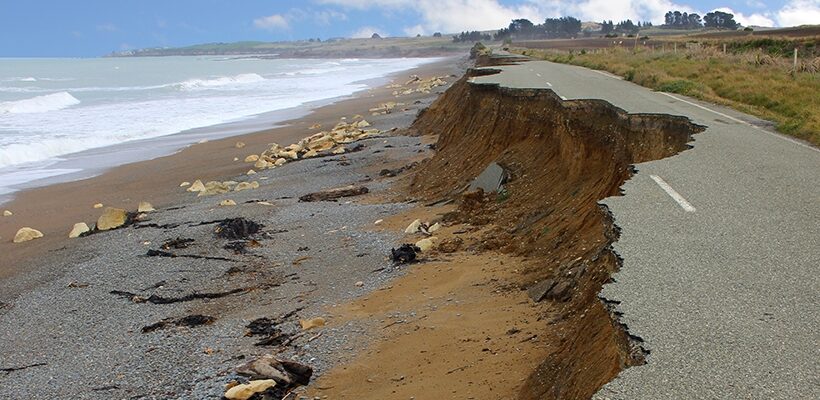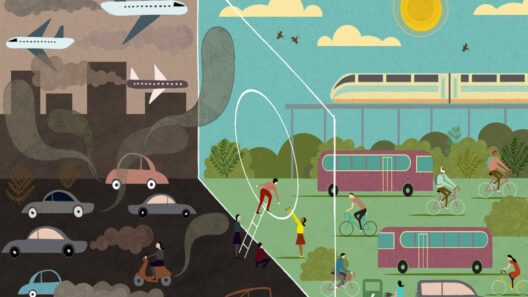Imagine strolling along your favorite stretch of beach, only to discover that a significant portion of the shoreline has vanished since your last visit. Today, coastal erosion affects not only the scenic beauty of our beaches but also poses severe threats to ecosystems, local economies, and communities worldwide. This silent yet pervasive phenomenon is intricately woven into the broader narrative of climate change.
Coastal erosion refers to the process by which shorelines are worn away by natural forces, primarily wave action, wind, and tidal movements. While some erosion is a normal part of the coastal dynamic, global warming has exacerbated the rate at which it occurs. Rising sea levels, attributable to melting polar ice caps and glaciers, mean that more water is regularly lapping at our shores, increasing the likelihood of erosion. So, you might ask: How does this gradual encroachment impact you directly?
Firstly, consider the profound implications for biodiversity. Our coastlines act as critical habitats for a plethora of species, from vibrant marine life to unique flora that thrive in sandy, saline conditions. As erosion continues to consume these natural holdouts, many species face the stark possibility of extinction. The loss of biodiversity not only undermines the health of ecosystems but can also destabilize food webs, leading to unintended consequences for local fisheries.
Furthermore, human activities have played a pivotal role in intensifying beach erosion. Coastal development, the construction of seawalls, and sand mining disrupt natural sediment flows. This disruption can lead to a calculated mismatch in the balance of beach ecosystems, making them vulnerable to further degradation. The more we alter our coasts for short-term economic gain, the more we invite long-term peril. How do we reconcile this desire for development with the imperative to protect our natural environment?
One might consider tourism, as many coastal communities rely heavily on summer vacations to sustain their economies. However, as beaches recede, what will happen to those iconic sun-soaked destinations that attract visitors year after year? The erosion of popular beaches threatens the livelihoods of countless individuals involved in tourism-related sectors, from hospitality to small businesses. Ironically, the very scenarios designed to attract tourists can be the same factors that drive them away when our coastlines are reduced to mere memories.
The rising frequency of extreme weather events, fueled by climate change, further compounds the problem. Hurricanes, torrential rains, and storm surges can accelerate coastal erosion dramatically, resulting in not only loss of land but also property damage. The financial burden placed on communities for repairing and reinforcing coastlines often draws resources away from other critical areas, such as education and health care. Will our communities choose to invest in short-term fixes instead of sustainable solutions?
One pivotal challenge lies in the answer to the age-old question of balance: how can we protect our coastlines while maintaining our way of life? Traditional methods of coastal protection, such as seawalls, might provide temporary respite but often exacerbate erosion in adjacent areas. Therefore, innovative solutions that work in harmony with natural processes are paramount. Nature-based solutions, like the restoration of mangroves and wetlands, can provide natural buffers against erosion while simultaneously enhancing biodiversity. Could these natural defenses hold the key to a more sustainable future?
Public awareness and community engagement are paramount as we face these challenges. Coastal communities must foster dialogue and work collaboratively on adaptive strategies that integrate climate science into local planning. Encouraging individuals to participate in conservation efforts, such as beach clean-ups and habitat restoration initiatives, can create a profound sense of ownership and connection to the land. What role can you play in preserving your local coastline?
Moreover, we must prioritize research and development in sustainable coastal management practices. By investing in technology that can predict erosion patterns, coastal communities will be better equipped to formulate long-term strategies that protect both human and ecological interests. Implementing policies that promote sustainable development is crucial; this includes restricting construction in vulnerable areas and promoting eco-tourism initiatives that focus on the natural environment.
Engaging youth in educational initiatives about climate change and coastal protection can inspire future generations to advocate for meaningful change. Schools and community programs can integrate environmental education, ensuring that young people understand the connections between their actions and the health of their coastlines. Are we preparing tomorrow’s leaders to champion this critical cause?
The beach erosion blues may seem overwhelming, but each wave of awareness brings the potential for change. As individuals, communities, and nations, we can collectively take action to mitigate the impacts of global warming on our coastlines. By fostering innovative solutions and encouraging sustainable practices, we can combat the erosion that threatens our beloved shores. Today, envision a future where our coastlines flourish, resilient against the silent attacks of climate change. What part will you play in safeguarding these precious landscapes for generations to come?






